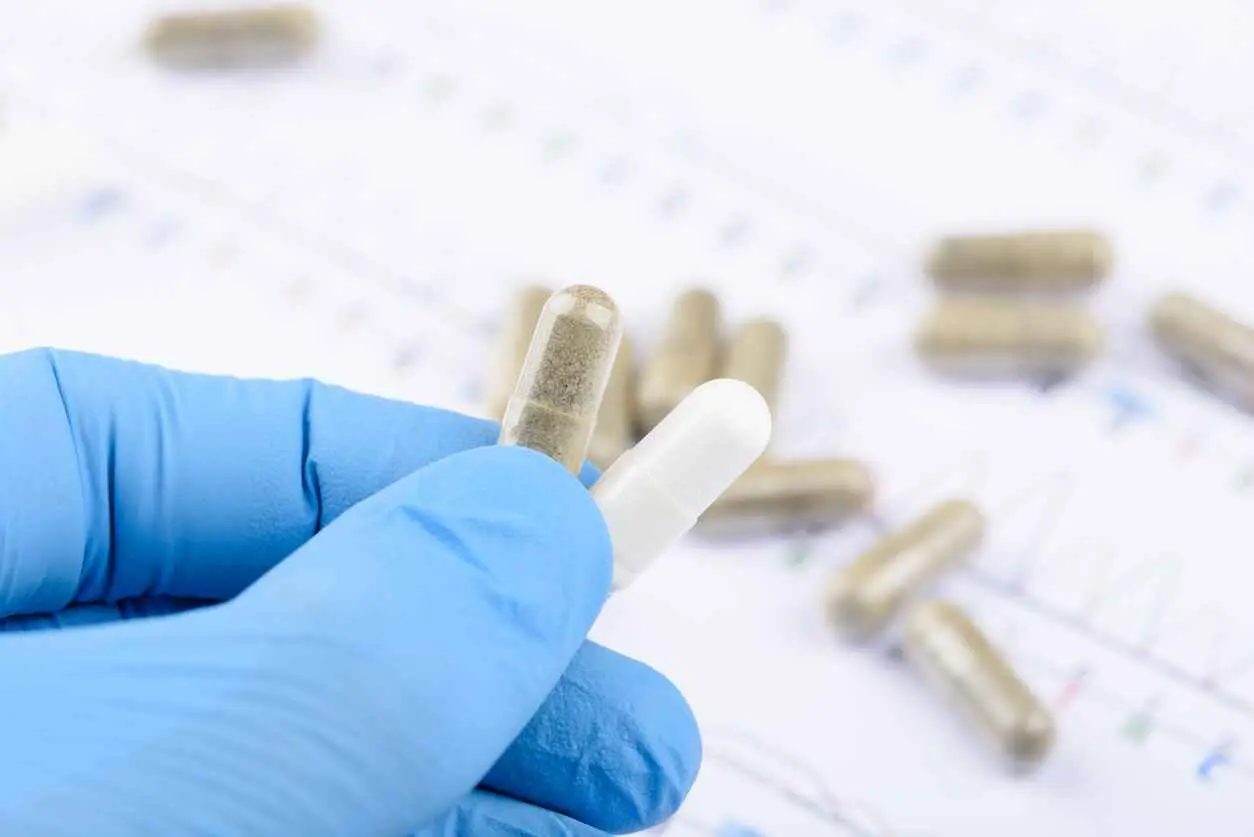What Is Pellet Hormone Replacement Therapy?
- Pellet hormone replacement therapy is a frequently utilised approach for the management and alleviation of menopausal symptoms.
- This procedure entails the insertion of small hormone pellets beneath the skin, gradually releasing hormones into the body for several months.
- In addition to alleviating menopausal symptoms, pellet therapy has the potential to enhance libido, reduce body fat, and maintain hormonal balance.
- While it can be highly effective, it's crucial to be aware that hormone replacement therapy carries certain risks, including an elevated susceptibility to developing severe conditions such as breast cancer.
Pellet hormone replacement therapy (HRT) is a technique for reinstating estrogen and addressing hormonal discrepancies in postmenopausal women.
While pellet HRT lacks approval from the European Medicines Agency (EMA), it has been in practice since the late 1930s. It has subsequently emerged as the predominant menopausal treatment in the European Union.
This article aims to comprehensively examine pellet hormone replacement therapy, shedding light on the implantation procedure and its benefits and potential risks.
What Is Pellet Hormone Replacement Therapy?
Hormone pellet therapy is an option for women experiencing menopause to replenish their estrogen levels.
Menopause leads to a halt in the natural production of estrogen, impacting a woman's reproductive cycle, bone health, and emotional state.
Hormone replacement therapy (HRT) works towards restoring the right balance of estrogen to prevent the more severe effects of menopause.
Who Qualifies For Pellet Hormone Replacement Therapy?
Hormone therapy serves the purpose of elevating estrogen levels within the body. Typically, it's administered to women aged 45 and older as they approach menopause, but there are situations where exceptions apply.
Certain women under the age of 45 may require additional estrogen to safeguard themselves against the lasting consequences of an estrogen deficiency. For these individuals, hormone replacement therapy (HRT) may be recommended to stimulate estrogen production.
A significant number of women going through menopause endure persistent and severe symptoms.
To alleviate their intensity, healthcare professionals may suggest hormone therapy as a potential solution.
Who Shouldn’t Use Pellet Hormone Replacement Rherapy?
While hormone replacement therapy (HRT) is generally considered safe, some individuals may not qualify for this treatment.
Typically, these are women with other medical conditions that could interfere with HRT or worsen existing issues.
According to the European Medicines Agency (EMA) recommendations, HRT should be avoided if you:
- Have a bleeding disorder or experience problems with vaginal bleeding.
- Have or had certain cancers like breast cancer or uterine cancer.
- Have had a blood clot, stroke, or heart attack.
- Have been diagnosed with liver disease.
- Have allergic reactions to hormone medication.
If you have any of these conditions mentioned above, it is advisable to explore alternative HRT options.
Are There Any Alternative Treatment Options?
There are alternative medical treatments that may produce the same results as hormone replacement therapy if hormone replacement therapy isn't a good fit for you.
Clonidine
Clonidine, a prescription medication, has the potential to relieve menopausal symptoms such as hot flashes and night sweats.
One notable aspect of this treatment is that it does not include any hormones, which means your body won't need to adapt.
In addition, opting for clonidine can decrease the likelihood of experiencing severe side effects often associated with hormone replacement therapy (HRT), such as the development of blood clots or specific diseases.
Gabapentin
Gabapentin, classified as an antiseizure medication, has the potential to provide relief from hot flashes in menopausal women.
Although this medication has not been approved by the European Medicines Agency (EMA), it can serve as a valuable alternative to hormone replacement therapy (HRT) for individuals who are unable to use estrogen.
What Is The Procedure For Getting Hormone Replacement Therapy?
Before determining the suitable hormone dosage for you, a healthcare professional will conduct assessments of your hormone levels and body mass index (BMI).
Next, a minor incision will be made, typically in the hip area, where a series of hormone pellets, either bioidentical or synthetic, will be implanted under the skin. These pellets release a consistent supply of hormones over approximately three months.
In cases of more severe hormonal imbalances, your healthcare provider may incorporate additional therapies, such as oral hormone pills or transdermal hormone patches that adhere directly to the skin, which may complement the effects of the implanted pellets.
Key Point: Understanding The Distinction Between Bioidentical And Synthetic Hormones
Bioidentical hormones are typically derived from plant sources such as soybeans or wild yams. They are designed to replicate the natural structure and composition of hormones.
In contrast, synthetic hormones are manufactured using chemical compounds like conjugated equine estrogens and progestin. These hormones undergo chemical alterations that are not identical to the naturally produced ones.
How Long Does The Treatment Take To Work?
It might take a couple of weeks before you start noticing the positive effects of bioidentical hormone therapy. In some cases, individuals have reported feeling a change only after three months of steady hormone release.
If you don't experience any improvement or if menopausal symptoms persist for four to six months, it's advisable to have a conversation with your healthcare provider.
They can explore alternative hormone replacement therapy options or make adjustments to your current dose.
What Are The Advantages Of Pellet Hormone Replacement Therapy?
The primary benefit of hormone replacement therapy (HRT) lies in its ability to alleviate menopausal symptoms. Consequently, HRT is likely to offer the following advantages:
- Enhance energy levels and mood.
- Lower the likelihood of developing specific types of cancer.
- Improve libido or sex drive.
- Decrease body fat.
- Reestablish the body's natural hormone balance.
- Protect against health conditions such as osteoporosis and heart disease.
Additionally, pellet hormones are absorbed directly into the bloodstream, minimising the potential for liver or gastrointestinal system complications.
Are There Any Side-Effects Of Pellet Hormone Replacement Therapy?
Side effects often manifest after the initial dose when your body adapts to the new hormone levels.
In many cases, these side effects naturally subside as your body becomes accustomed to the hormones.
However, if they persist, it's advisable to consult your healthcare provider. They may adjust your dosage to help alleviate and manage the side effects more effectively.
Common Side Effects:
These side effects often arise as your body adapts to the hormonal shift and may encompass the following:
- Weight gain
- Fatigue
- Acne or increased breakouts
- Headaches
- Blurred vision
- Heightened facial hair
- Breast tenderness
- Spotting, cramping, or bloating
- Mood swings
- Alterations in bone density
- Loss of appetite
It's important to note that hormone replacement therapy might also elevate the risk of developing certain diseases.
What Are The Safety Concerns Involved In Pellet Hormone Replacement Therapy?
Bioidentical hormone replacement therapy carries certain risks that can impact your overall health.
One significant concern is that many of these treatments lack FDA approval due to insufficient evidence demonstrating the safety and effectiveness of pellet HRT.
This lack of approval also means that no official pharmaceutical body oversees the quality of the medication. Furthermore, there needs to be more standardisation in manufacturing these pellets and regulations regarding the specific hormone levels they may contain.
Long-term use of HRT may also heighten the risk of developing the following conditions:
- Breast cancer
- Blood clots and stroke
- Coronary heart disease
- Pulmonary embolism
How Can You Reduce The Risk Factors Of Hormone Therapy?
Following HRT, it is advisable to consult your doctor regarding the management of potential side effects. They may suggest the following:
Select Appropriate Aftercare Products:
One of the most effective strategies for mitigating the adverse side effects of HRT pellet implantation is to have the appropriate products ready post-procedure. These may encompass:
- Anti-Inflammatories to alleviate redness, itchiness, and discomfort at the incision site.
- Medication to reduce swelling and bruising.
- Paracetamol Or Aspirin to alleviate headaches and other bodily discomfort.
Make Follow-Up Appointments
It's crucial to schedule regular visits with your doctor following the procedure. These visits serve the purpose of monitoring your symptoms and any potential side effects.
Your healthcare provider can recommend additional treatments or medications to aid your body in adapting to HRT.
Regular follow-up appointments are also instrumental in minimising the risk of developing more severe side effects, such as breast cancer or heart disease, as your doctor will closely monitor your progress.
These appointments also ensure that you maximise the benefits of your hormone treatment.
If compounded bioidentical hormones are ineffective early on, you can discuss dosage adjustments with your doctor.
Make Healthy Lifestyle Choices.
Incorporating healthy habits into your daily routine can help the body manage and adjust to HRT.
If you’re unable to use HRT, these lifestyle changes may also work as an alternative treatment.
These habits include:
- Getting physical exercise
- Following a nutritious diet
- Maintaining a healthy weight
- Managing stress
- Managing other health concerns like high cholesterol, blood pressure, and hypertension
It's also recommended that you avoid smoking and use alcohol as much as possible.
If you need assistance, don't hesitate to contact Mobi Doctor for support and guidance. We are here to help.






